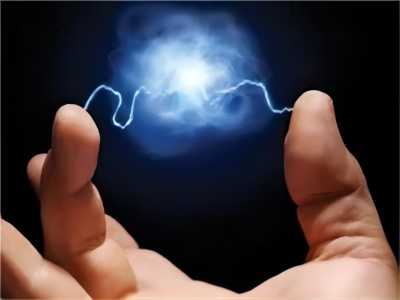Static electricity is a natural phenomenon that is very common in the manufacturing process as well as in our personal lives. Static electricity is generated by the excitation of electrons or ions between the surfaces of two substances after friction with the detachment of the contact surfaces. Coehn (Coehn) that: If two objects are in contact, the high dielectric constant is positively charged and the low dielectric constant is negatively charged, i.e., electrons move from the surface of the object with high dielectric constant to the surface of the object with low dielectric constant and a contact potential difference occurs, forming a double electric layer at the interface. The amount of charge at this point is proportional to the difference between the dielectric constants of the two objects:; however, in practice, even the same material, due to differences in its surface morphology, crystallinity and impurities, etc., electrostatic phenomena can occur.

1. The mechanism of electrostatic generation in the textile filter dust system
① Filter material is often polymer non-woven, when the fiber particles and pipeline or filter material to produce intense and frequent friction and collision, thus generating strong static electricity;
② dust-containing airflow into the work area is not charged, when the dust-containing airflow of fiber particles and filter particles produce intense tangential collision, so that between the two produce electron exchange, that is, the generation of electrostatic, that is, the generation of gas current;;
2. The harm of static electricity on the filter media
After the object is charged, static electricity always has to be released. There are two ways to release the charge: one is the natural escape, the second is a different form of discharge. Electrostatic discharge is the process of conversion of electrical energy into heat, and may produce electric sparks, which in turn become a fire or detonation of the source of fire.
3. Anti-static working mechanism
(1) theoretically speaking, the current more advanced anti-static treatment methods are divided into two categories:
① fiber surface coating method: the fiber finishing, so that the fiber surface attached to a layer of conductive layer;
② Internal infiltration method: conductive ions are used to infiltrate into the surface of the fiber to make the fiber conductive.
(2) antistatic working principle generally according to the following role:
① smoothing effect: the presence of antistatic oil on the surface of the polymer has a smoothing effect, through the smoothing effect can reduce friction, thereby reducing the static electricity generated by friction.
② conductive effect: most of the antistatic oil agent is ionic and polyoxyethylene type non-ionic surfactants. The former conducts electricity through active ions or even metal ions, so that the electrostatic generated by friction quickly escape and no longer gather electricity; the latter due to the hygroscopic effect of hydrophilic groups, so that the presence of trace electrolytes have ionized field, thus indirectly reducing the surface specific resistance.
③ electric neutralization effect: because the antistatic agent and polymer material surface charge polarity opposite, so as to produce electric neutralization phenomenon, so that electrostatic elimination.
4. Filter anti-static treatment method
Synthetic fibers and their fabrics are easy to produce static electricity, cotton fabrics under certain conditions will also produce strong static electricity. With the accumulation of static electricity in the fabric, it is possible to produce discharge sparks, which may cause instability in the production work state, or cause combustion and explosion. Therefore, how to make the fabric (especially synthetic fabrics) with anti-static, is the subject of decades of research. So far, countries have researched and developed their own antistatic fabrics, the solution and methods also have a variety of ways, but in summary, there are roughly the following three types:
In the fabric surface using moisture-absorbing resin finishing, also known as surface treatment method (impregnation method or spray method);
in the fiber inside the addition or mixing of hygroscopic materials, or the introduction of hydrophilic genes, also known as gene infiltration method;
Interwoven in the fabric conductive yarn, also known as the heterogeneous blending method.
The first two are antistatic methods that rely on the absorption of moisture in the air. Because the dielectric constant of water ε0 = 80, and the dielectric constant of textile materials εt = 2 ~ 5, it can greatly improve the anti-static effect of textile materials. However, when using this type of method, the antistatic effect on the dependence of environmental humidity, in low humidity conditions will lose its antistatic properties, resulting in its application is limited. The third type of conductive fibers and ordinary fiber blends or conductive yarns embedded interwoven method, the advantages of which are:
(1) the antistatic properties of the fabric by the use of environmental humidity is very small, even if the relative humidity is less than 30%, there are still good antistatic properties.
(2) fabric antistatic effect has a good tolerance.
(3) the conductive fiber in the fabric is more expensive, but the amount of mixed less, generally mixed with the proportion of 3% to 10% can be.

